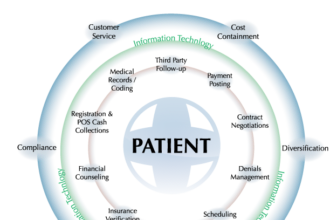 The term solution is not overused. It is misused.
The term solution is not overused. It is misused.
 The term solution is not overused. It is misused.
The term solution is not overused. It is misused.
Many times it is utilized by organizations to describe offerings that do not meet the full intent of the terminology. To me, a solution is not just a fix. It is not just one piece of technology. It incorporates a number of activities, working in harmony, to ensure that an organization meets its intended strategic goals after completing a project.
Solutions Are Not Easy to Implement
Too often in healthcare, organizations focus on fixes as opposed to solutions. This results in short-term benefits leading to either a reemergence of the same issues, or the creation of new ones. Organizations must first identify tangible strategic goals and the associated outcomes they desire, and then they can seek out comprehensive solutions. Several potential objectives that come to mind include the following:
- Moving from a two-year credentialing cycle to a continuous credentialing state, ensuring providers are perpetually “privilegeable”
- Automating FPPE/OPPE processes so that they can be objective, standardized, and transparent resulting in mutual benefits to both the organization and provider, as opposed to being an administrative hindrance
- Development of shared service centers capable of performing onboarding activities (recruiting, credentialing, privileging, enrollment, etc.) with much more efficiency. This not only eliminates risk and duplication, but also ensures adaptability to an ACO model where providers work in multiple locations and more patients have coverage
- Proactive compliance reporting and risk management through an end-to-end platform that consolidates data across business units
- Improved satisfaction for both patients and providers through effective engagement and communication tools
- Detailed, and accurate, quality metrics for providers that help ensure coordination between clinical outcomes, billing activities, and hiring processes
The key is getting your organization to make goals like these.
Once your organization determines its strategic objectives, then it must actively scour the healthcare market to find vendors that actually understand these goals and provide solutions to deliver on the intended outcomes. Vendors that successfully deliver solutions, as opposed to fixes, generally include the following activities in the offering:
Project Management – Pretty straightforward, yet critical and often complex. This requires a focused discipline that effectively communicates, manages risks, meets milestones, holds resources accountable, and constantly aligns effort with the intended outcomes. Project management also ensures the appropriate deliverables (management and staffing plans, operational plan, etc.) are effectively developed. The appointment of an executive steering committee to demonstrate leadership and guidance towards the end game is also highly encouraged.
Change Management – If you are investing money on a solution, it is safe to assume that something will change. Change management ensures buy-in. All stakeholders are effectively communicated to, trained, and involved to ensure a seamless transition.
Process Alignment/Redesign – The old adage of people, process, and technology holds true. Most solutions require implementing or optimizing technology. However, technology is only as good as the people who use it, and the processes that align to it. A true solution always ensures that the processes align to the technology, which may require redesign as some become automated and others evolve.
Scaled Rollout/Transition – It is never a good idea to roll-out a solution without testing it first. Leveraging a beta/pilot program ensures a reasonable plan that validates and “operationalizes” the solution in a controlled environment. This allows the opportunity to make the necessary tweaks to skills, processes, and technology to ensure an effective roll-out to the entire user population.
Adoption – Go live is not the end goal. Adoption is. Following a successful implementation, it is critical that your organization constantly communicates to its employees and stakeholders to ensure that they are optimizing the implemented solution.
So What’s the X Factor? In Many Cases, Technology
Most solutions, at least in the current environment, incorporate some form of technology. This may be new technology, or optimization of technology currently in place. However, often organizations select a “technology” while disregarding the above activities and thus are dissatisfied with the inability to achieve their strategic goals. Therefore, organizations must incorporate the aforementioned activities in combination with technology, which may, or may not, require external assistance to deliver.
What’s the lesson?
Don’t just implement a fix. Understand the complexity, scale, and scope of the strategic imperatives for your organization and enlist the support needed to implement a successful solution – one that is comprehensive. Going for the cheapest, or easiest approach may seem like a great short-term decision, but in the long-run, it may pose significant risks to your organization.






